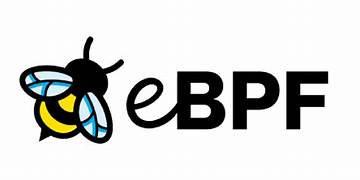Enhancing Kubernetes Security
 Sumangal Chhetri
Sumangal Chhetri
Ingress Packet Filtering Using eBPF
In today's cloud-native ecosystem, security and performance are paramount. One innovative way to address these concerns is by implementing ingress packet filtering with eBPF (Extended Berkeley Packet Filter) in Kubernetes environments. In this blog, we’ll explore how to use eBPF to enhance Kubernetes security and manage network traffic more effectively.
Introduction to eBPF and Kubernetes
eBPF (Extended Berkeley Packet Filter) is a powerful Linux kernel technology that allows running sandboxed programs in response to various events within the kernel. It offers a flexible and efficient way to filter and analyze network packets, providing real-time insights and control over network traffic.
Kubernetes, a leading container orchestration platform, manages and scales containerized applications. Securing network traffic in Kubernetes is crucial, especially with the increasing number of microservices and complex network interactions.
Why Ingress Packet Filtering?
Ingress packet filtering is a technique used to inspect and control incoming network traffic to a Kubernetes cluster. By filtering packets based on predefined rules, we can:
Enhance Security: Prevent unauthorized access and mitigate threats by filtering out malicious traffic before it reaches the application.
Improve Performance: Reduce the load on application services by discarding unnecessary or harmful traffic at the ingress point.
Implement Fine-Grained Control: Apply specific filtering rules based on IP addresses, ports, or other packet attributes.
Project Overview: Ingress Packet Filtering Gadget
The Ingress Packet Filtering Gadget project focuses on creating an eBPF-based solution for ingress packet filtering in Kubernetes environments. Here’s a high-level overview of the project:
Developed eBPF Program:
- Implemented an eBPF program to filter incoming network packets based on criteria such as IP addresses and port numbers. This ensures that only authorized traffic is allowed into the Kubernetes cluster.
Kubernetes Integration:
- Integrated the eBPF program with Kubernetes for dynamic deployment and management. This allows for seamless updates and configuration changes without disrupting the running services.
Validation and Testing:
- Thoroughly tested the filtering rules in various scenarios to ensure they work as expected. This included validating the accuracy of the filtering logic and ensuring no legitimate traffic was mistakenly blocked.
Key Benefits
Enhanced Security: By filtering packets at the ingress point, the solution provides an additional layer of security against potential threats.
Efficiency: Reduces the need for complex network policies and firewall rules by leveraging eBPF’s performance and flexibility.
Scalability: Easily integrates with Kubernetes, allowing for scaling and managing traffic as the number of services and traffic volume grows.
Conclusion
The Ingress Packet Filtering Gadget demonstrates how leveraging advanced technologies like eBPF can significantly enhance security and performance in Kubernetes environments. By implementing ingress packet filtering, organizations can better protect their applications and manage network traffic efficiently.
For a deeper dive into the project and to explore the code, visit the Ingress Packet Filtering Gadget GitHub repository. Feel free to contribute, provide feedback, or adapt the solution to fit your specific use case.
Stay tuned for more updates and insights into cutting-edge technologies and their applications in cloud-native environments.
Subscribe to my newsletter
Read articles from Sumangal Chhetri directly inside your inbox. Subscribe to the newsletter, and don't miss out.
Written by
